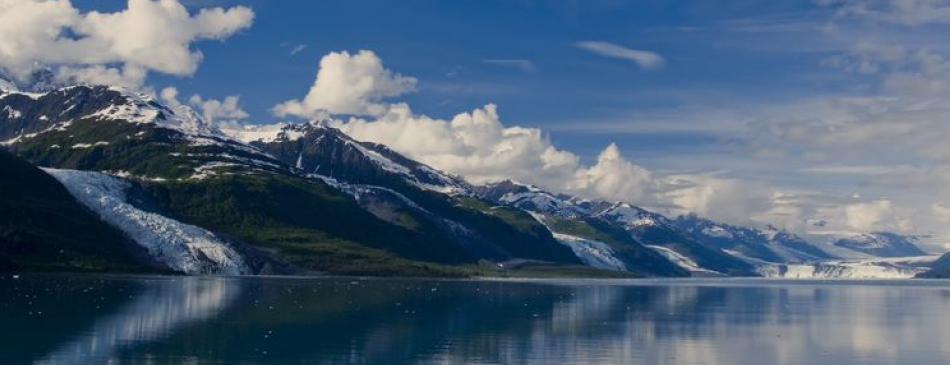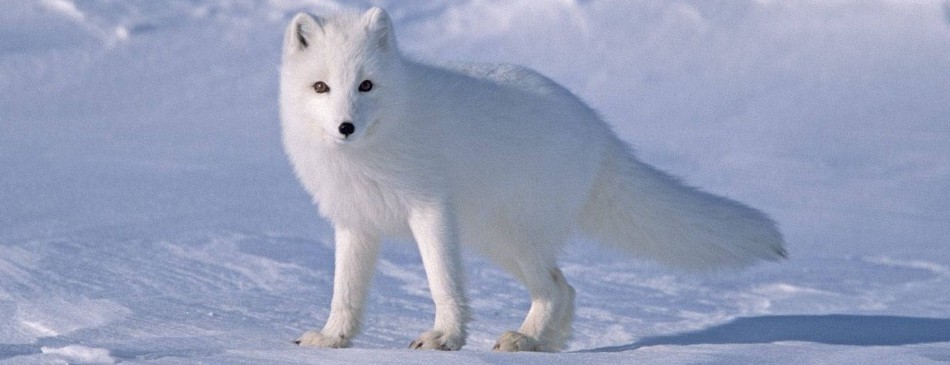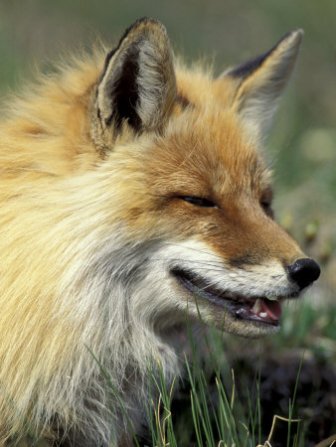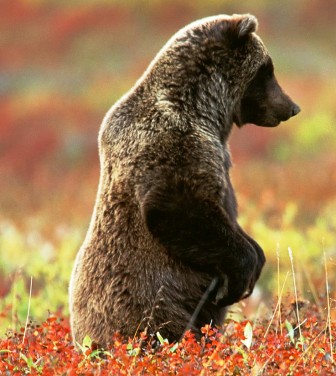With 112 mammal species, Alaska ranks 12th of the 50 U.S. states in mammalian diversity. Mammals abound amid the wilderness. Great herds of caribou migrate across some northern areas of the state. Moose move within ranges they establish, but do not migrate seasonally or move in herds as do caribou. Reindeer were introduced to Alaska as herd animals for Alaska Natives, and there are no free-ranging herds in the state. Dall sheep, and an abundance of small mammals are also found.
Alaska is well known for the mammals that are found in the state. There are several endangered or threatened species in the continental United States that are still found in relative abundance within Alaska. The highlight of many people’s visit to Alaska is the opportunity to see large mammals such as whales, moose, caribou, bears and wolves. One interesting point is the number of animals that were once found in the wild in Alaska that had to be re-planted here due to their extinction or near extinction. The bison and muskox are just two examples.
One thing that makes Alaska so special is that all three species of North American bears flourish here. There is a chance that you may be lucky enough to see a bear. But even if you don't, you will never be far from one, because Alaska is bear country. . How you behave often dictates the outcome of an encounter with a bear. Even though encounters with bears are not common and aggressive bear encounters are rare, the more you know about bear safety the better off you are.
Wolves are common over much of Alaska.. They are the wild ancestors and genetic source of all modern breeds of domesticated dog. People enjoying wilderness activities must be aware that all large wild animals, including wolves, present some risk to human safety. Wolves rarely act aggressively toward people, but there have been instances in Alaska and Canada where wolves have attacked people. The first case of wild healthy wolves killing a human in modern North America occurred in Saskatchewan in 2005; a second person was killed in 2010 in Alaska. Several other incidents of wolf aggression have resulted in serious injuries.
The beaver is the largest rodent in North America. Beaver are industrious engineers that prefer certain woody species of vegetation for food and construction of their dam lodges, which they use for shelter and food storage. The beaver's use of woody species for food and shelter modifies streams and surrounding woodlands. Modification often improves the health of crucial life-giving riparian areas. Beaver dams can increase the amount of water in a given area, raising the water table and increasing water storage. Beaver ponds can trap and store organic materials, nutrients, and sediment, thus filtering water and leaving downstream water cleaner.
Muskox as a species have changed little since the last ice age. A close relative of sheep and goats, muskox have cloven hoofs, a stocky build with a slight shoulder hump, and a very short tail. Inupiaq-speaking Eskimos call them omingmak, “the animal with skin like a beard,” because of the long guard hair that hangs almost to the ground. Muskox are perfectly adapted to live in their harsh arctic environment. Their shaggy coat consists of the long, coarse, outer layer and short, fine underhair. This soft brownish wool-like underhair, or “qiviut,” is spun into yarn that is highly prized for its warmth and softness.
Symbols of the wild north, caribou are a sought after species for wildlife viewers in Alaska. These “wandering deer” are native to North America, Europe, and Asia. Caribou spend most of their lives in open country. They are superbly adapted to cold, wind, and snow. Their coats are thick with hollow hairs, which provide outstanding insulation. Their large feet act as snowshoes, shovels and even paddles in water, allowing them to travel efficiently and also to dig down to their chief winter forage plants such as lichens (reindeer moss), dried sedges and grasses, and small shrubs. In summer they still feed primarily on lichen, but also will graze on mosses and shrubs.
Alaska winters are harsh requiring most warm-blooded mammals to put on weight and grow heavier coats to prepare for the winter. Then there are other, more customized adaptations. In some large herbivores such as caribou and musk oxen, special nasal passages are designed to capture heat that would otherwise escape as steamy breath. Arctic wolves have specialized blood vessels in their paws that keep pad temperatures about one degree above freezing. Some winter residents avoid the whole climate challenge by hibernating.
Dall Sheep in habits many of the mountains of southcentral Alaska. They are a popular sight among tourists along a section of the Seward Highway where they often come down to the highway. The are very sure-footed and seem to have no trouble climbing up and down the steep rocky mountain sides.
|
|







